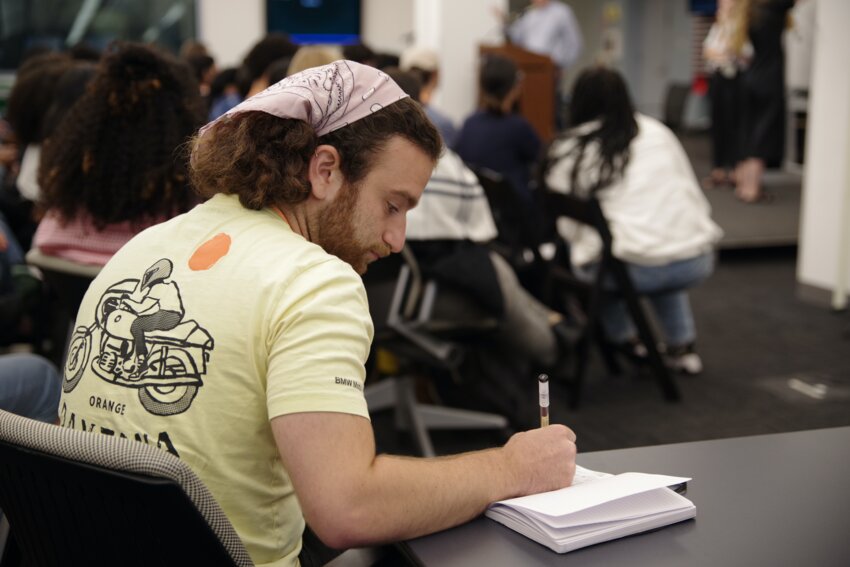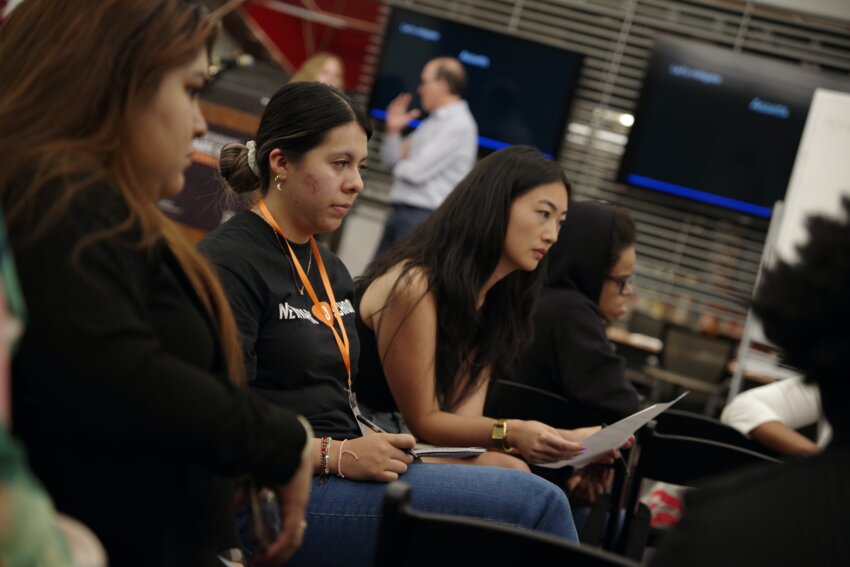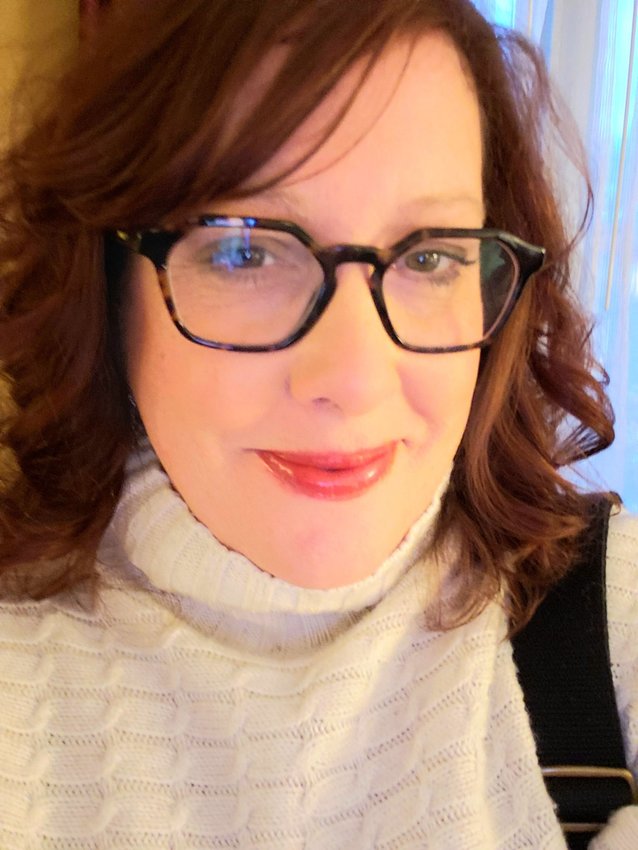Dean Graciela Mochkofsky is on a mission to make tuition free for all Craig Newmark Graduate School of Journalism students at The City University of New York (CUNY) by 2026. It’s just one of her ambitious plans for the school, its students, New York City and the broader journalism community.
Mochkofsky is the third dean of the graduate school — one of the youngest J-schools in the country, founded in 2006. She credits her predecessors with creating a foundation, developing programs that fill gaps in the industry and fostering “a philosophy of service.”
“I am the dean of growth. I’m taking the school into its natural next stage, growing its visibility and endowment to make it tuition-free,” she said.
The master’s program is organized in three semesters. Depending on the semester, there are between 100 and 200 students on campus. The dean said 90% of the current class receive scholarships based on merit and need. Half of the students are New York residents; 60% are people of color; and 20% are first-generation Americans.
“About 10% to 14% of our students are international,” she noted.
The students come to the program from different phases of life. Some are fresh out of undergraduate school. At least a third of the student body already has professional experience working in journalism.
A growing number of students are intent on becoming journalists after working in another field. For example, they’ve had aspiring journalists from prior careers in finance, business, teaching, historians, academia and chefs.

“Every person is different, but there is a common narrative — that they were miserable in their jobs. Oftentimes, they wanted to be a journalist when they started out, but somebody persuaded them not to do it — either because they felt journalism was dying, was too hard, or they weren’t going to make enough money. But they've decided to follow their hearts and do something meaningful to them,” she explained.
“We have a very flexible program, so people can build their own journey. It’s such a diverse group of people, and we want the curriculum to reflect that diversity. I’m not talking about demographic diversity. I’m talking about diversity of views and interests, and reasons why they want to do this work — and the type of work they want to do,” Mochkofsky said.
For example, students fluent in English and Spanish may choose the bilingual program. Courses of study include data journalism, documentary filmmaking, audio journalism, feature writing, international reporting, local accountability and investigative reporting and other concentrations.
“We have about a dozen specializations people can choose from and combine. Having more than one area of expertise gives our students the edge professionally,” she said.
Newmark is home to several innovation and grant-funding centers, as well. The first to launch was the McGraw Center for Business Journalism, thanks to an endowment from the McGraw family. It’s a global program that provides grants to journalists worldwide working on critical reporting in business and economics. The center also funds one or two Newmark students in the business and economics track each year.
A second is the Tow-Knight Center for Entrepreneurial Journalism, which produces research related to technological innovation for news publishing. It was formerly led by Jeff Jarvis, who retired in December. The dean hopes to have a new executive director in place by the fall.
The third is the Center for Community Media (CCM) — previously a standalone organization brought under the J-school umbrella in 2011. CCM serves and unites approximately 300 hyperlocal, ethnic and community news outlets operating in New York City. The center provides them with training, guidance on sustainability and access to consultants and legal counsel.
“The government of New York City has a budget for media, and they are mandated by law, like every government, to advertise what they do — to keep people informed about things like where to get vaccines, benefits and rights,” Mochkofsky said. “The city government has spent millions of dollars every year, but we did a research project that led us to understand that the majority of these funds were not going to community media, which were serving a big chunk of New Yorkers and the New Yorkers who needed this information most — immigrants, poor, people of color and other marginalized people.
“We advocated for more equity for these publishers,” she continued. “That led to an executive order that Bill de Blasio signed when he was mayor, mandating agencies to spend at least 50% of their online and print budgets on community media. We created a unit to monitor compliance, assist both the city and the publishers and ensure they were ready to receive the ads. … Between the start of the project to today, that's led to more than $50 million in advertising funds.” For many of those community news outlets, that represented a 1,000% increase in revenue, she estimated — monies that could be invested in more journalists to cover their communities.

In 2023, the J-school also launched the Journalism Protection Initiative, which provides research and training to journalists who report on dangerous or adversarial situations — both abroad and domestically.
“We have students who are covering protests or communities that see them as the enemy. It’s gotten very bad in some instances. So, how do you train the next generation to deal with that and to make good risk assessments? … We started seeing that we needed to offer a different type of safety training to people working domestically,” she explained.
“This initiative has three mandates. One is to create a new curriculum that adequately trains our students for these actual risks. The other is to work with the industry and understand how we can serve our colleagues,” she said. That manifested in a full-day symposium hosted at the J-school. The third mandate is continued research into current risks.
The initiative brought together “free-press champion” Joel Simon, the former executive director of the Committee to Protect Journalists, and Columbia University’s Knight First Amendment Institute, who produced the documentary “Covering Democracy: Protests, Police, and the Press.” It takes a hard look at how police are increasingly targeting, detaining and arresting journalists across the country.
As the dean, Mochkofsky continually considers how aspiring and working journalists require new perspectives, skills and professional opportunities. Journalists are no longer pigeonholed into careers as reporters and editors. They can also explore engagement, social, product, data and media business management.

The J-school relaunched its Master of Arts in engagement. It offers an Executive Leadership Program and plans to unveil a new program in the coming year to train business leaders in the nonprofit local news segment. Students can also gain real-world experience through eight-week paid internships.
“We’re seeing an increasing number of students who have jobs, sometimes full-time jobs, so we have more evening and Saturday classes than we've ever had,” she said. “Two years ago, we created a part-time program.”
The dean reported that about 90% of students received some level of scholarship support, and roughly a quarter of them pay no tuition.
“Even then, we realized that our students didn’t graduate debt-free,” she said.
Debt can be career-ending for a journalist. Mochkofsky cited an average reporter's salary of $56,000, with many making far less. It doesn't make economic sense to pay upwards of $70,000 to $100,000 for a master's degree in the field, she said. Even gainfully employed graduates may have to leave the field to pay off student debt.
“We think that’s a big problem for this country and society,” she said.
Dean Mochkofsky calculated the cost of ensuring that all students benefit from free tuition by 2027. “We need an endowment of $60 million that yields 5% a year. We already had $20 million that Craig Newmark had given, and he agreed to give us $10 million more, bringing us halfway to our goal. We’re not there yet, but we have until the end of 2026 to raise the other $30 million,” she said. Though it’s an achievable goal, having the responsibility to raise it is nonetheless daunting. “Like so many other leaders I know, I wake up in the middle of the night with a heavy sense of responsibility. We have significant soft commitments from major funders that will take us closer to the goal, but we are in a challenging fundraising landscape for journalism. But I’m confident we’ll get to the goal, making us the first graduate school of journalism to be fully tuition-free.”
 Gretchen A. Peck is a contributing editor to Editor & Publisher. She's reported for E&P since 2010 and welcomes comments at gretchenapeck@gmail.com.
Gretchen A. Peck is a contributing editor to Editor & Publisher. She's reported for E&P since 2010 and welcomes comments at gretchenapeck@gmail.com.
Comments
No comments on this item Please log in to comment by clicking here